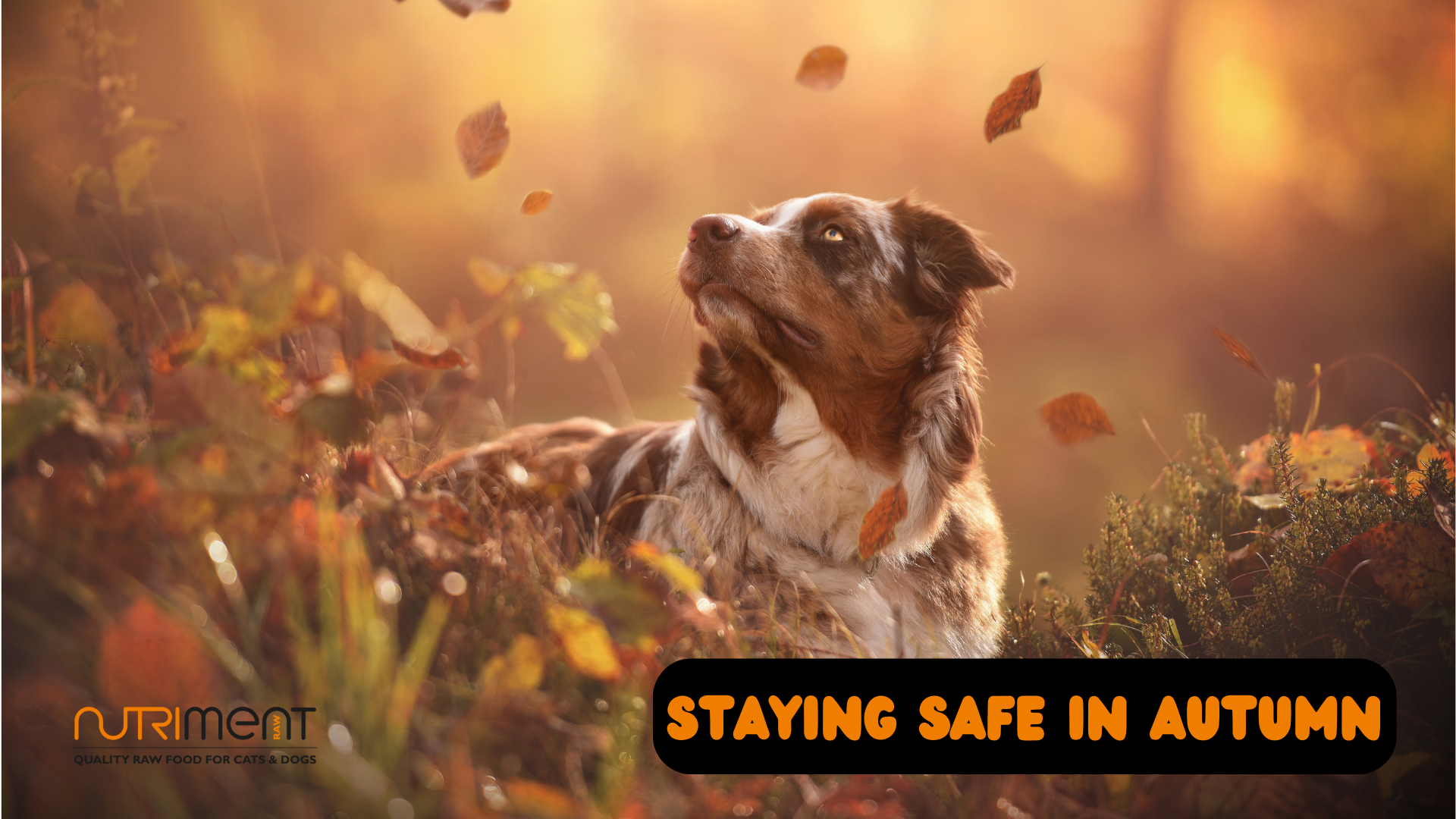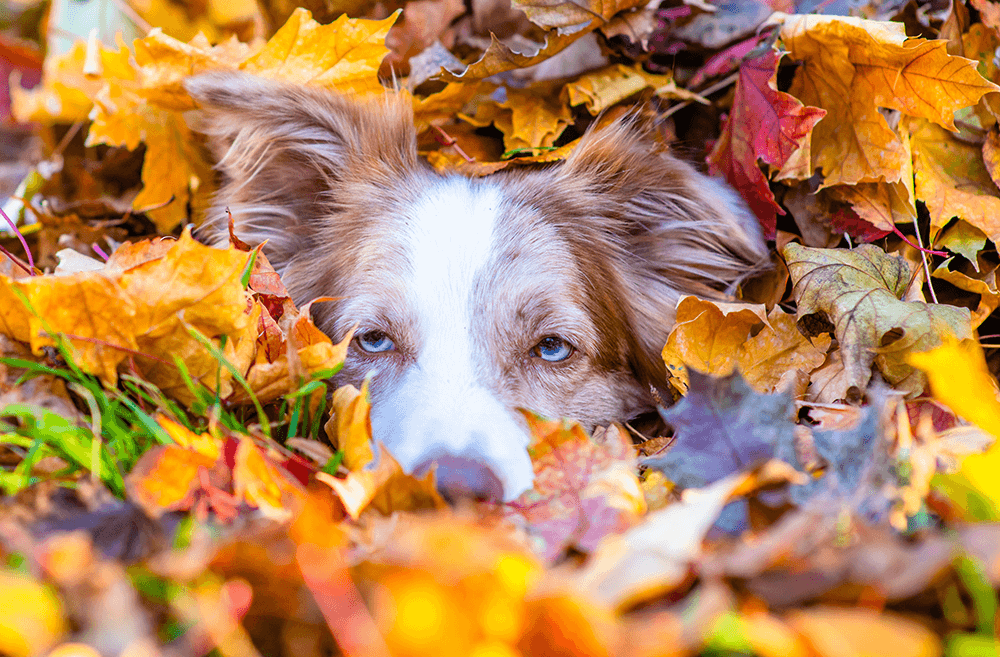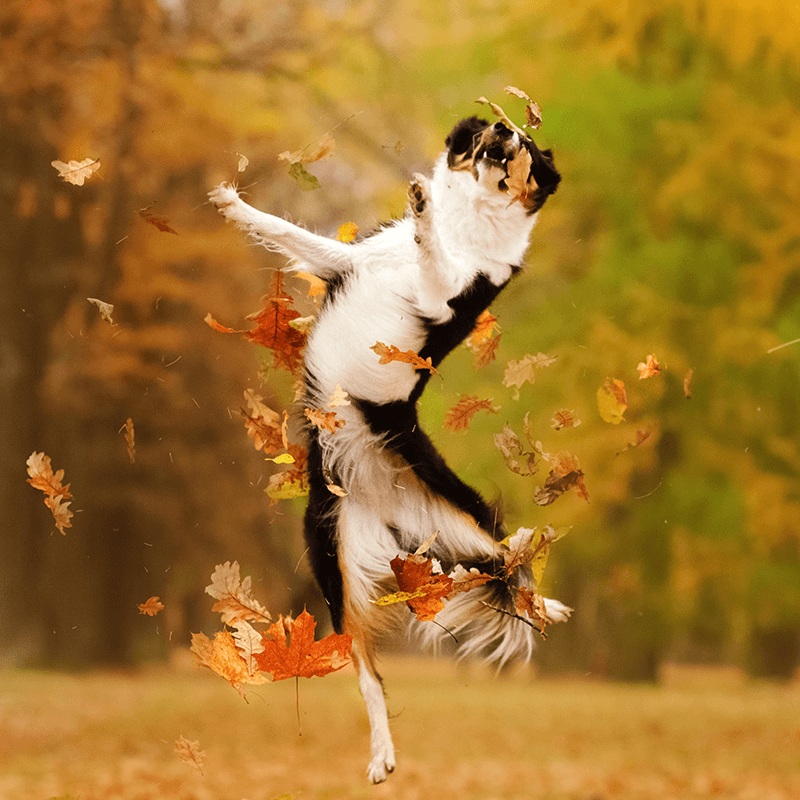Staying safe in autumn

And just like that, summer seems to have bid us farewell for another year.
Temperatures are starting to fall, evenings are starting to darken and we’re begrudgingly digging out the coats, thick socks and brollies for our dog walks. Autumn is certainly upon us!
Whilst there’s no denying the beauty of this season’s burnt oranges and golds, it’s always super important to be mindful of the fresh dangers that autumn can bring for our pups. We’ve put together a list here of the main things you should be wary of this autumn.
Conkers
Conkers are everywhere at this time of year and so pose a large risk. Despite being bitter and seemingly unappetising to dogs, you should still be aware in case they are ingested. Conkers contain a toxin called aesculin which can cause sickness and diarrhoea in dogs, as well as fatal consequences when eaten in large quantities. Conkers are also serious choking and blockage hazards.

Acorns
Similarly to conkers, acorns can be found in abundance in autumn. Acorns contain tannins which can cause digestive issues and potentially lead to kidney failure. They also pose a choking risk to smaller dogs.
Antifreeze
As temperatures nosedive, your pup is more likely to come across antifreeze on their walks. Used to increase grip on potentially slippery roads, dogs can pick up the poisonous chemical on their paws and then ingest it during cleaning. Be sure to wipe paws when you get home from an autumnal walk.
Mushrooms
There are over 10,000 types of mushroom, and although only around 100 are thought to be toxic, even the most skilled mycologist may struggle to identify one on a busy dog walk. Keeping your dogs away from wild mushrooms is the safest way to prevent accidental poisoning and potentially fatal consequences.
Fallen leaves & fruit
As leaves and fruits fall from the trees, they can create imminent dangers for dogs. Piles of leaves can develop bacteria and mould which can cause digestive issues if ingested. Fallen, rotting fruit can also pose a bacteria / mould danger, as well as expose potentially poisonous seeds, stones and pips.

Alabama rot
Alabama rot is a very rare but usually fatal disease of which the cause is relatively unknown. It is suspected that the disease is caught from wet and muddy conditions – which are more common in autumn and winter. Alabama rot affects dogs by blocking and damaging the blood vessels in their skin and kidneys. This can cause painful skin lesions, sores and ulcers, usually around the paws and lower legs. Try to rinse muddy paws when returning from wet walks and contact a vet immediately if your dog starts to show symptoms.
Halloween & fireworks
Lots of joy and fun for us… not so much for our canine companions. Loud noises, strange costumes, lots of door knocking – autumn celebrations can create a lot of abnormal stress for dogs. Be aware of any behaviour changes such as panting, shaking, pacing and drooling which can indicate that your dog is anxious and stressed. Help to ease their anxiety with a safe, calm and dark space that they can retreat to, or
If dark, cold and wet weather means your dog isn’t getting as much exercise as you’d like, then bring the (mental) exercise indoors! Have a look at our boredom busters post here.





